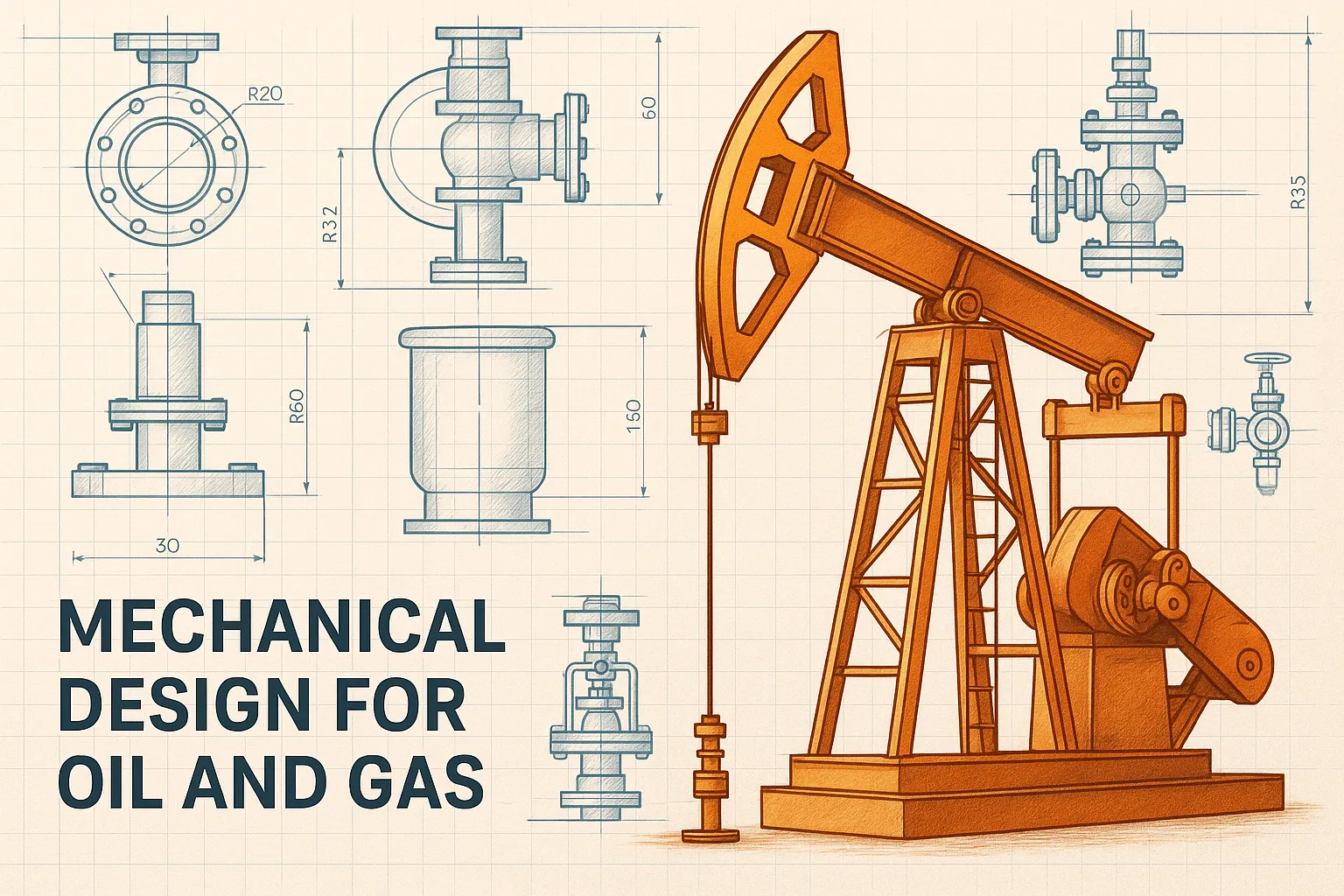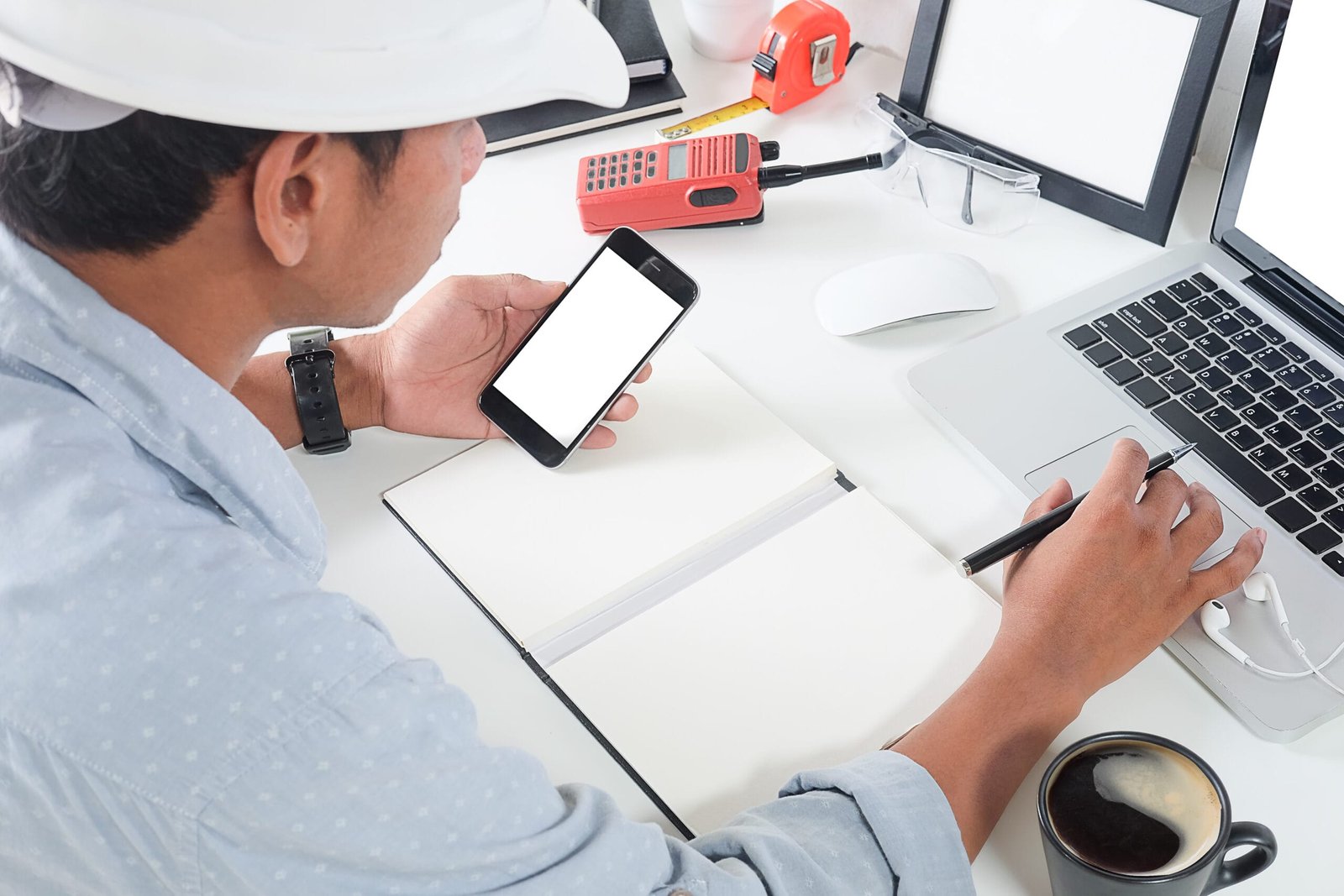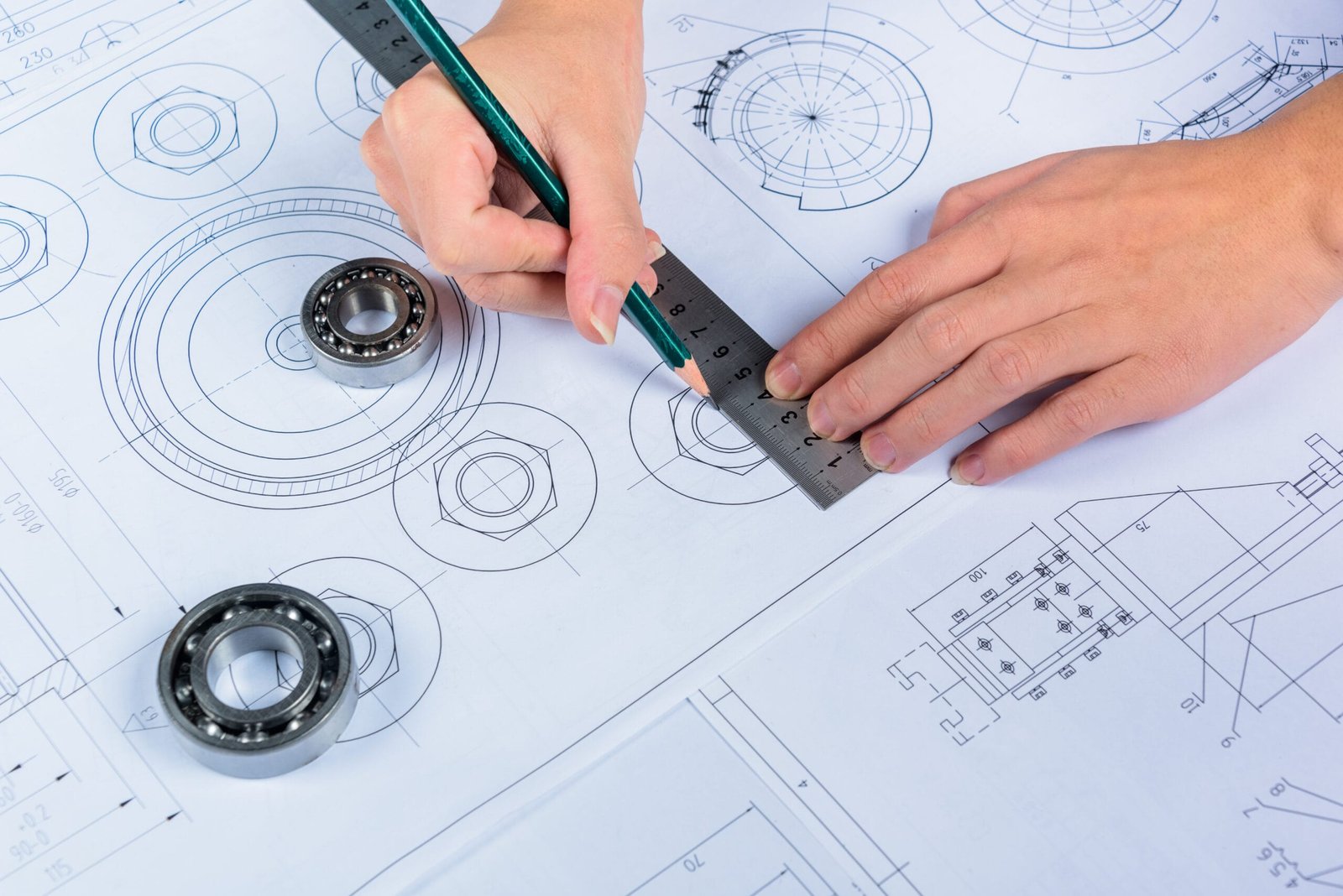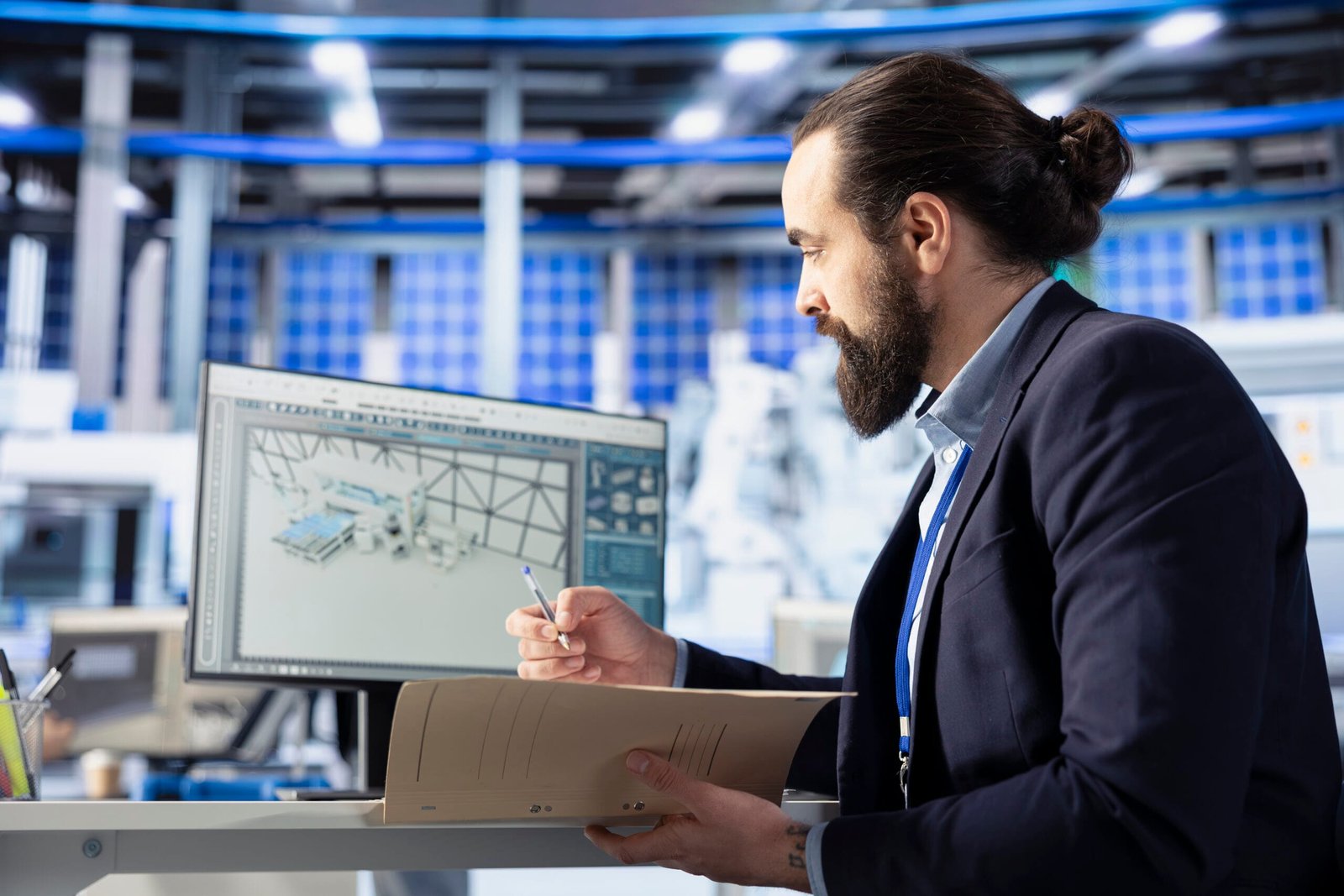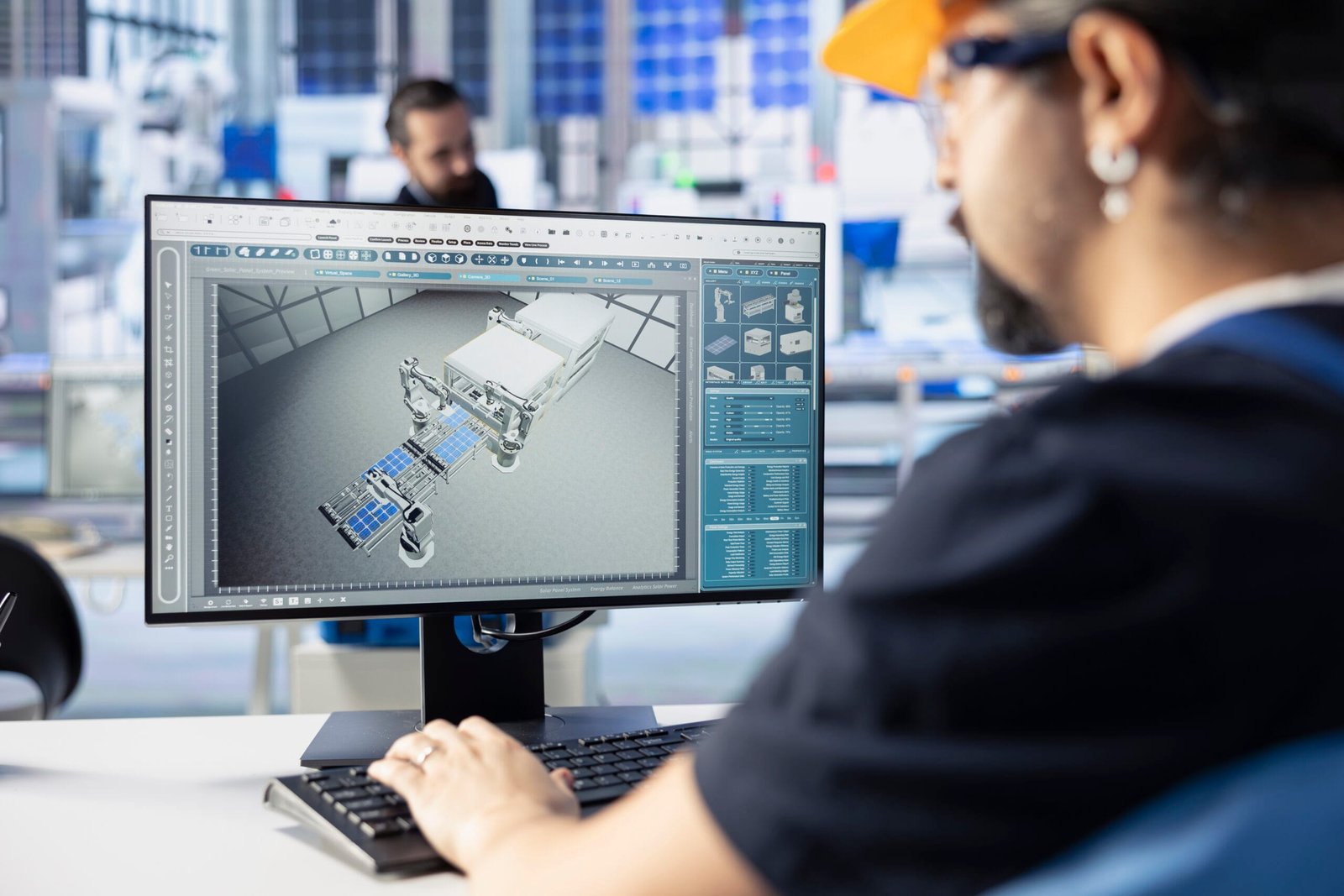The oil and gas industry works in very extreme conditions. So, devices must be able to bear heat, pressure, and corrosion. If the design is weak, it will fail.
Standard parts do not always work well in tough conditions. This is the reason custom design should be adopted, as it is better to bear extreme conditions. So, mechanical design is crucial for oil and gas projects.
Importance of Custom Design
General parts don’t survive oilfield demands. This is because they are not built to bear pressure. Failures cause downtime, accidents, and loss. Apart from the wastage of money, they also cause harm to the environment, such as oil spills or explosions.
Custom systems cut risks and keep work safe. Apart from that, these designs offer more control to the engineers. So, when you adjust systems according to the site, it minimizes waste and reduces the need for repairs. This results in sustainable and secure operations in the long run.
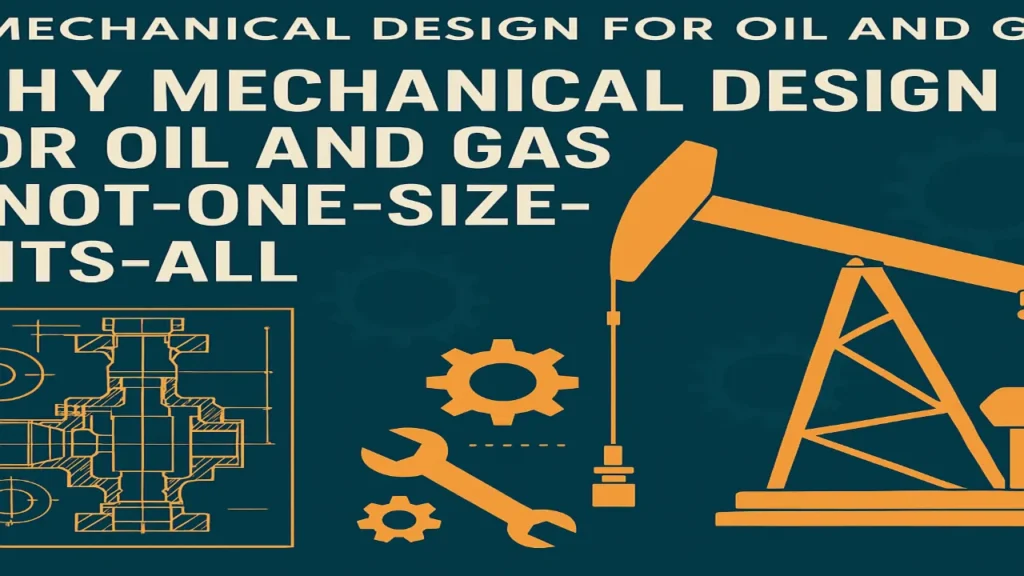
Pressure Vessels – These are containers that can withstand heat, pressure, and chemicals. A normal tank can not handle the pressure, so custom pipes are designed. These pipes cause smooth flow, less vibration, and maintenance. So, it prevents leaks.
Pipes and Manifolds – Smooth flow, less vibration, easy care. You are able to distribute flow in different directions using manifolds.
Supports – Hold heavy loads, resist shocks, stay firm. Custom supports are created to hold pressure and shocks.
Cooling Systems – Control heat in deserts or deep sea. Custom cooling systems are created using air, water, or other methods.
Role of Materials in Mechanical Design for Oil and Gas
You must pick the right materials to make your equipment last longer. So, if you use normal steel, then it may rust, crack, or wear out in harsh conditions. Custom designs are built with stronger alloys that are corrosion-resistant and can extend life.
So, you have to pick the right material for each part to minimize leaks and costs for the future. This is the reason that materials are as valuable as the design.
Benefits of Mechanical Design for Oil and Gas
There are numerous long-term benefits of custom mechanical design. These include:
- Strong client trust.
- Less failure.
- Safer plants.
- Higher efficiency.
- Fit for any site.
- Lower costs over time.
- Ready for automation.
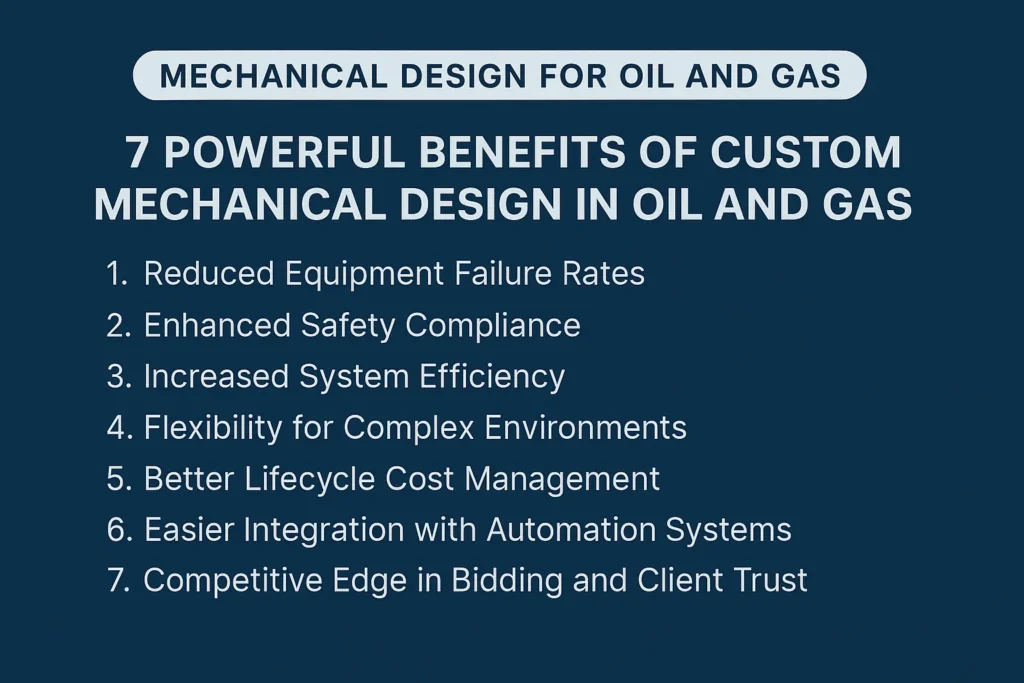
Challenges
- Costly materials.
- Tough transport.
- Balance between standard and custom.
Example
A Middle East refinery had pipe failures. So, engineers studied the problem and built custom skids with strong metals and sensors. This resulted in an increase in uptime by 22%. Moreover, the costs dropped by 30%.
This case proves that you need to combine both custom design and modern technology. This results in getting higher reliability, efficiency, and safety.
FAQs
Q: Why should I choose custom design?
Standard parts fail in oil and fast. So, custom designs are made to survive.
Q: How does it improve safety?
Built for the site and tested to standards.
Q: Do materials matter?
Yes, they resist heat, stress, and corrosion.
Q: Is it worth the cost?
Yes, savings come with fewer failures. Q: Can designs be reused?
Modular systems are created in a way that they can be used again.
Summary
So, a custom mechanical design is preferable for oil and gas. It minimizes risk, saves money, and enhances safety. A strong design today prevents big losses tomorrow. You have to pick the right materials so you can avoid downtime and accidents.
Custom design enhances efficiency, helps in automation, and the systems can thrive for longer. Finally, a mechanical design for oil is not only about stronger equipment. You have to make a safe, smart, and reliable system to bear extreme conditions.

